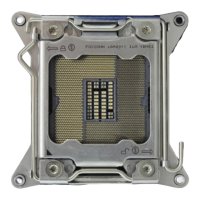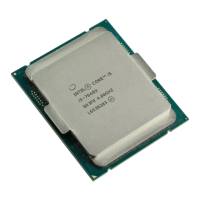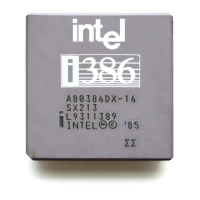Intel® Xeon Phi™ Coprocessor DEVELOPER’S QUICK START GUIDE
13
Working directly with the uOS Environment Intel® Xeon Phi™ Coprocessor
Since the coprocessor is running Linux and is effectively a separate network node, root or non-root users can
log into it via “ssh” and issue many common Linux commands. Files are transferred to/from the coprocessor
using “scp” or other means.
The default IP address for the coprocessor as seen from the host is 172.31.<coprocessor>.1, while the
coprocessor sees the host at 172.31.<coprocessor>.254 by default. The coprocessor can also be
referred to from the host by the alias mic<coprocessor>. For example, the first coprocessor you install in
your system is called “mic0” and is located at 172.31.1.1. It sees the host as 172.31.1.254. If a second
coprocessor were installed, it would be called “mic1” and located at 172.31.2.1, and it would see the host
as 172.31.2.254.
For detailed information on setting up the card for non-root users, adjusting the network configuration,
mounting an NFS file system exported by the host for use on the Intel® Xeon Phi™ coprocessor, etc., please
see the document Intel® MPSS User’s Guide.
Useful Administrative Tools
This product ships with the following administrative tools, found in the “/usr/bin” directory. Root, and
users needing to use these tools, should add this directory to their default path:
micinfo - provides information about host and coprocessor system configuration.
micflash - updates the flash on the coprocessor; saves and retrieves the version and other
information for each section of the flash
micsmc - a tool designed to ease the burden of monitoring and managing Intel® Xeon Phi™
coprocessors.
miccheck – a utility for verifying the configuration of an Intel® Xeon Phi™ coprocessor by running
various diagnostic tests.
micnativeloadex – a utility that will copy an Intel® MIC Architecture native binary to a specified Intel®
Xeon Phi™ coprocessor r and execute it
micctrl – a tool to help the system administrator configure and restart the coprocessor
micrasd – an application running on the host to handle and log hardware errors.
mpssflash – the POSIX version of micflash.
mpssinfo – the POSIX version of micinfo.
Please see section 8 in the MPSS User’s Guide for details on these tools and their arguments.
Getting Started/Developing Intel® Xeon Phi™ Software
You develop applications for the Intel® MIC Architecture using your existing knowledge of multi-core and SIMD
programming. The offload language extensions allow you to port sections of your code (written in C/C++ or
FORTRAN) to run on the Intel® Xeon Phi™ Coprocessor, or you can port your entire application to the Intel® MIC
Architecture. Best performance will only be attained with highly parallel applications that also use SIMD
operations (generated by the compiler or using compiler intrinsics) for most of their execution.

